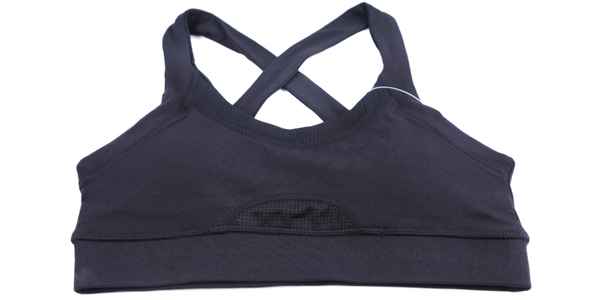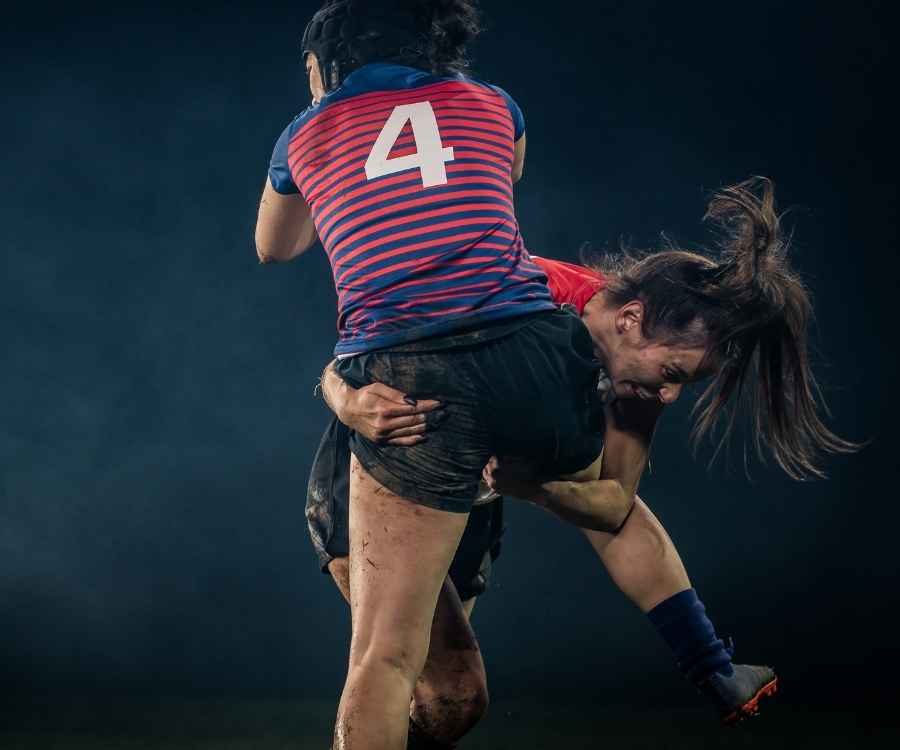Most female rugby players do not wear additional breast protection beyond traditional sports bras.
However, recent studies have highlighted a greater need for education around breast injuries.
There is an emerging trend of companies designing new products to provide extra breast protection for female players.
A Minority Of Female Rugby Players Wear Breast Protection
A research study was published in 2020 based on a survey of Australian female players of contact sports.
This included rugby sevens, rugby union, and rugby league. The survey also included women who played Australian Rules (a high-contact version of football).
There were over two hundred players in the survey.
17% reported that they wore some form of breast protection.

Most of those who did so (32 out of 207 players) wore a combination of shoulder pads and chest pads.
If you’re not familiar with this type of combo, its a single undergarment that includes padded shoulders and extra padding in the chest area.
Only three respondents simply wore breast padding. This can be done by simply putting extra padding into the cups of sports bras.
I should mention that although the majority of people in the survey played some form of rugby, there was also a significant number of AFL players (Australian Football).
I don’t have a breakdown of replies that were only from rugby players.
Why Don’t More Female Players Wear Chest Padding?
The 2020 survey gave an interesting insight into why the large majority of players (83%) don’t wear some form of chest protection or padding.
A little over half (53%) said that they didn’t know products existed that provided protection.
Nearly a quarter of respondents (19%) said that the extra protection was too uncomfortable. It’s not clear from the report whether these players had tried products or if that was their perception without experience.
Fourteen percent felt that extra protection impeded their performance. Specifically, their response was that it restricted their upper body movement.
Fifteen percent simply believed that extra protection is not necessary.
Eight percent said that they couldn’t find equipment that would fit them.
Opportunity for manufacturers
There’s a clear opportunity here for manufacturers of body armour for sports e.g. shoulder pads and chest protection.
Better marketing would at least show women and the parents of rugby-playing teenage girls that there are products already out there.
However, the designs may need to be looked at. Female players don’t want to wear clumsy and uncomfortable layers.
Using Sports Bras For Protection

Sports bras weren’t invented to protect against bruising and injuries. They were designed to provide extra support during physical activity.
Some players use foam inserts in the cups to provide that extra protection against impacts.
I’ve heard that some Aussie Rules players double up by wearing two sports bras. I’m not sure how effective that would be.
My guess is that rugby players are more likely to use bandaging and pads under the sports bra to cobble together a homemade form of protection.
However, that’s a hunch. Part of the challenge of writing this article is that female athletes don’t tend to chat about sports bras during social occasions. Boots, yes. Bras, no.
Breast Protection Is Relatively New
Back in 2005, an academic survey was conducted among women rugby players in the United States. They were asked about the different types of protection that they used.
Not surprisingly, mouthguards were the most common protection by a whopping margin. A small percentage of players mentioned shoulder pads, scrum caps, and athletic tape.
There wasn’t a single mention of breast protection.
Breast Discomfort And Injuries

The Australian survey had asked players if they had ever experienced a breast injury in a match or a training session.
58% of the players reported that they had experienced at least one breast injury from contact.
Interestingly, their coaches guessed that number to be less than five percent. Part of the problem here is that players aren’t reporting their injuries.
Different levels of discomfort
As any woman knows, taking a sharp heavy blow to the breast is painful. But there are different levels of discomfort.
A light impact can cause some bruising that is sore for a few minutes but eases over time. Rugby players simply grit their teeth and get on with the game.
A harder impact can cause a soft tissue injury with significant swelling and more prolonged pain.
That lengthier duration of discomfort can impact performance on the field and the player’s general enjoyment of the sport.
These injuries are thankfully temporary. However, repeated breast impacts can result in the soft tissue changing to a more fibrous harder form.
This is known as fat necrosis. It can change the shape of the breast and is also a painful affliction. There is no sign that this is common amongst older players.